Back in 2012 The Silo reported on a dark novel titled Zurabia. That book held a plot that seems less like fiction with each passing year. Corrupt bankers, a practically valueless dollar, hyper-unemployment and underemployment, home-grown terrorism, the uptick in natural disasters and the overall lack of trust in our most important institutions – these are some of the reasons all North Americans should be very, very concerned, according to author Peter Dash a world-traveled researcher for Harvard University’s Center for International Affairs.
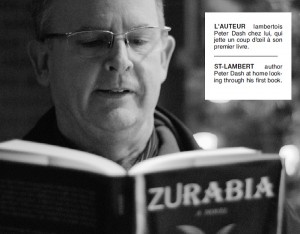
“I predict a brutal world ahead of us,” says Dash, author of “ZUrabia,” a book about rogue forces taking over the world’s most important institutions. “Unfortunately, I have been right since my research at Harvard in 1986, when I questioned the viability of government institutions to meet general needs and growing problems, both domestically and abroad.”
The pragmatic holiday shopper this year will purchase items to safeguard their families against these threats, which have been long in the making and won’t disappear quickly, he says.
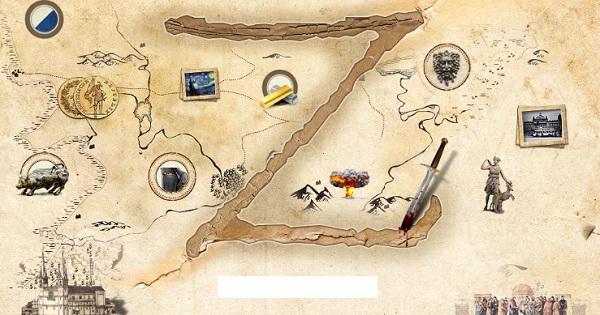
“Terrorism wasn’t inaugurated with 9-11; extremism in Muslim sects has been growing for decades, and Neo-Nazi groups are starting to flourish in failing states like Greece,” he says. “The dollar has been steadily losing its value since the creation of the Federal Reserve in 1913; climate change has been on the radar for quite a while; and there have been greedy bankers since, well, banks have existed.”
“If you’re confident that everything is sure to be okay, then you’re not paying attention,” he says.
He offers a four-point survival strategy for holiday and everyday shopping:
• Gold is good: The dollar has lost 95 percent of its value in 100 years, and it will continue losing value. As
the Reserve continues to flood money into the system, thereby reducing current or potential value, more inflation is inevitable, acting as yet another tax on wages. So, collect and buy any gold that you can and consider spending federal notes while they’re still worth something to businesses. Think about your
jewelry, and buying more. Silver is a good option if gold is too expensive, and there are Exchange Traded Funds, or ETFs, that are backed by physical gold. A reputable banker or broker can help explain for those who are interested. “TD Ameritrade or Charles Schwab may be good places to start getting information on gold and silver ETF trading,” according to Dash.
• Inflation: Spend your money now or smartly invest it before you lose it. Remember, banks often give clients less than one percent on many accounts, but inflation on food and real items we use, like gasoline, are going up by much more. In essence, your banker is stealing your money through the assistance of the Fed, which is killing your savings rate by cheapening money. As if to pour salt on this wound, the bank,
in many cases, lends money at four percent or higher. Rerouting some bank savings/wages by investing in canned food, for example, may protect you against the scourge of food inflation, as well as other disasters.
• Worthy purchases: With food and water, a failed society puts a premium on additional goods. They include home insulation, gardening tools and materials, computer programs and language learning kits – perhaps Spanish or Chinese – because of the increasing prominence of other cultures. Guns, security systems and other measures to protect one’s home will likely prove extremely valuable should law enforcement be spread too thin, or fail as an institution.
• Buy in bulk: Places like Wal-Mart or Costco will help you get the most value with large purchases of food. It’s important to be well-stocked if something happens that results in the emptying of grocery markets, but remember to have adequate space in your house, apartment or cabin for a “safe” room, which is part of a sound strategy for protecting you and your family.
Peter Dash has been a teacher, professor and corporate trainer for the last 17 years, working in Saudi Arabia, the former Soviet Union and China. He has an applied science degree in forestry from the University of British Columbia and a Masters in applied teaching from Southern Queensland in Australia. He was a researcher in world (dis) order and youth groups at Harvard University’s Center for International Affairs, started by Henry Kissinger. He follows the investment field intensely, focusing on commodity funds and trends.
Fifteen percent of his book’s royalties will go to needy students consistent to the many years Dash has worked in assisting voluntary youth organizations. He lives on a small tropical island that is stocked with the finest well water, fish and food. Dash invests in Gold ETFs and commodity trading companies.
Supplemental– CBC radio interview with Dash on Zurabia
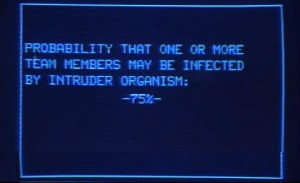
Getting Into Hollywood Accidentally…When I conceived the idea of a computer and technology museum around 25 years ago I didn’t concern myself with things like revenue models and how the place would be funded. Instead, I just worried about getting the coolest (and oldest) pieces of technology I could in order to have the best displays possible and appeal to the widest range of people.
Fortunately, I still think like that. However, the reality of having to pay bills for storage and electricity and all of the other things that come with running a proper business (and make no mistake, a museum is a business) means that on top of having some of the greatest technology pieces in the world to look at I must find ways of making money along the way.
A couple of years ago a production company called me asking for some early computers to use in a documentary about the origins of the internet that was going to run on the Discovery Channel (or was it the History Channel?) The guy was such a quick talker that I never really got a chance to get concrete information on what the show was going to be called or when it was going to air. To this day, I still don’t know if it ever did.
Then the CBC called. They were looking for an older computer running DOS with WordPerfect, the de facto standard in word processing – in 1989. An upcoming episode of “The Fifth Estate” required a computer recreation from the 80’s and they wanted to know if I could help. I missed the initial call and by the time I had gotten back to them, they had located something locally. It was at this time, however, I started thinking differently about our collection.
Some time had passed, and then the television show “Design By Decade” called. They needed some pictures of machines from the 90’s (and yes, in terms of computers, these are now quite ancient) and then Wired magazine asked for pictures as well. People writing Wikipedia articles were asking for permission to use some of our unique photos of machines to enhance their submissions. I started to think that we were really onto something.
When I first heard about a remake of 1982’s “The Thing” I never knew I would have something to do with it. A production designer called about putting computers from that time period into the 2011 remake. The only unfortunate part, because of the nature of the film, was that they would require purchasing the computers, not just renting them. “I can’t very well rent them from you and potentially return them with fake blood on them now can I?” I recall her saying. I had to agree. In the end, none of our computers actually made it into the film but I did my part as a consultant and helped steer the production in the right direction.
Earlier this year (2012), someone from Cineflix Media called. I recognized the name from the American Pickers and Canadian Pickers shows I somehow ended up addicted to. They required a recreation of a 70’s something office with computers and related materials. Dubbed as the “world’s most heroic airborne combat missions” it seemed like the furthest subject matter from computers I could think of, but hey, everyone needs to have an office, right? Getting paid for renting out our equipment was a real bonus, plus we got to be part of something cool. Now I found myself thinking about what the television and movie houses might want and have started acquiring those machines. Typewriters and old cell phones are now filling the nooks and crannies of our storage units.
Most recently a Toronto production company called, producing a film called “Public Service”. A short film that will make its rounds in the film festivals next year, it stars Gil Bellows (“Ally McBeal”) and Sheila McCarthy (“Little Mosque on the Prairie”). The majority of the film takes place in a government office in the mid 70’s and required some hard to find computers. A large one that normally sits in storage because it’s too big for even us to display was used during filming. We are excited to see how it all turned out, but we now feel like we’re pros at renting our stuff out to production companies.
We are presently working on expanding our website to included film and television production rentals as part of our service offering. It has not only become a nice revenue stream for the museum but it’s also exciting being involved in television and film. From the CRT screen, to the LCD screen, to the Silver screen we go! For the Silo, Syd Bolton.
With this Saturday, July 1st marking the celebration of Canada’s 150th Anniversary, the country recently hired the renowned New York ad agency Juized (*satirical) to rebrand the nation as “The Greatest Country On Earth”. This phrase has typically been associated with the U.S., but America let the trademark slip and Canada has scooped it up and taken it as her own.

Juized is actively promoting the phrase and image for Canada, while redesigning the Canadian flag and revamping the national anthem to reflect this new status.
Juized has just released this short video on the challenges of rebranding Canada in anticipation of the campaign release on Canada Day.
While the rebranding of Canada may be a marketer’s dream it is actually the imaginary creation of Media-Corps,a dual-client sales agency and the largest Canadian Media Representative in the U.S. The company created the Juized video * about Americans not getting Canada with the help of 2 top funny men — CBC’s Pat Kelly and Peter Oldring as a tribute to the Canadian milestone and to show appreciation for Canada’s unique culture.
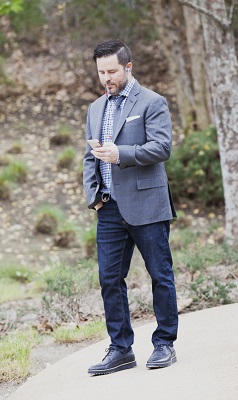
A native Canadian, Media-Corp’s founder Robert Laplante helps American advertisers understand that for a brand to be successful beyond its own borders, it’s critical to understand the different demographics and their behaviors. For the Silo, Susan Mackasey.
Supplemental- Top Ten New York City Ad Agencies

I began writing this post after an annual viewing pilgrimage of sorts. Each year on the eve of shopping’s busiest day, I crack open the well worn plastic jewel case and fire up the DVD player. It’s a fictional account but based in fact and is very entertaining and I can’t help but wonder what “might have been” after watching CBC’s 1996 mini-series “the Arrow” again. [You can watch this right here at the end of this post CP]
Over the decades fact and fiction have become tangled but the basic truths remain intact. In the late 1950’s a highly advanced jet interceptor designed to seek (and if necessary destroy) Russian nuclear bombers was conceived, designed, built and flown in Canada by a predominantly Canadian team. Here’s where things get fuzzy. The Arrow was developed when the federal Liberal party were in power but was finished and flown when the Conservatives were in power. It represented not only the technological capability of Canada’s aviation industry- but also the econo-political agenda of the mid-twentieth Century. So what happened at that time to help spell the doom of the Arrow?
-The ICBM- intercontinental ballistic missile was viewed as the future of warfare not the nuclear bomber. This meant that a jet interceptor was obsolete because it would be unable to intercept approaching missiles.
-Bad timing: on the day of the rollout of the very first completed Arrow, the Russians launched Sputnik, the world’s first artificial satellite. In the public eye jets seemed unimportant.
-The American Bomarc missile system was designed to intercept incoming nuclear bombers and ballistic nuclear missiles. The Bomarc had a small nuclear warhead which would detonate in the pathway of approaching missiles (or bombers) and create a nuclear ‘shield’. The Bomarc was highly controversial at the time because our Prime Minister did not want nuclear missiles on Canadian territory. However, our Defence Minister did not agree and eventually resigned over the matter. This defence ‘split’ exacerbated the Arrow program and any chance for an Arrow squadron legacy.
-The Canadian designed Iroquois engines were not readied in time and were not fitted into the Arrow. These engines were innovative and theoretically could have propelled the Arrow to speeds of Mach 2.5 or possibly Mach 3.0- far beyond every fighter of the time with the exception of secret black technology projects like the American Blackbird SR-71. Had the Canadian engines been readied and proven, there seems little doubt that international orders would have offset some of the Arrow’s mounting costs.
Black Friday…….almost 15,000 workers lose their job.
There is no official record of just who ordered the destruction of the remaining Arrows. Other than a few recovered test models, an incomplete cockpit and a few seconds of in flight film, nothing remains of this wonderful airplane . For the Silo, Jarrod Barker.

Supplemental-
University of Saskatchewan The Nuclear Question in Canada http://www.usask.ca/diefenbaker/galleries/virtual_exhibit/nuclear_question_in_canada/
Post Featured Image- http://plunkettgw.deviantart.com/art/AVRO-ARROW-17-139364086
Boeing’s Bomarc Missile http://www.boeing.com/boeing/history/boeing/bomarc.page
Nick Storring — Gardens

Gardens was composed, performed, recorded and mixed spring 2011-autumn 2013. All instruments performed by Nick Storring. The work was designed as an informal tribute to arranger/ producer/ composer Charles Stepney. Its titles refer to the Come To My Garden by Minnie Riperton which Stepney co-wrote, produced and arranged. No musical materials were borrowed, however.
Audio PlayerThe creative processes which birthed this album was funded by the 2011 Toronto Emerging Composer Award, which is administered by the Canadian Music Centre and generously supported by Michael Koerner and Roger D. Moore. No effects processing was employed aside from simple dynamics, equalization, mixing, and spatialization. Other ‘processing’ is strictly through acoustic or electromechanical means.
Instrumentation: violin, cello, electric mandola, electric bass, guitalele, Strumstick, banjo, harpsicle, autoharp, esraj, kemence, rebab, ananda lahari, Hohner Pianet-T, Yamaha CP60M stage piano, glockenspiel, steel pan, thumb pianos, toy pianos, roto-toms, snare drum, djembe, khol, bells, thunder tubes, rainstick, woodblocks, cymbals, other found/ homemade percussion, jaw harps, melodicas, harmonicas (diatonic and chromatic), tuning reeds, harmonium, khêne, mey, hulosi, xaphoon, concert flute, bansuris, sulings, recorders (alto, soprano, sopranino), various other flutes, mijwiz, been, pan pipes, kazoo, found wind instruments, voice.
Additional implements: bows, mallets, plectra, e-bow, handheld fan, electric toothbrush, vibrator, microphones,contact microphones, amps, speakers, earbuds, Headrush Shockrock vibration speaker, Danelectro Free Speech Talkbox, Sansui RA-700 spring reverb.
Many thanks to those who offered listening, feedback, instruments, support and exposure (through various channels) during the creation of this work. There are many of you, and I truly value your contributions.
© 2013 Nick Storring
all tracks SOCAN
Supplemental- Blouin Artinfo article about Nick’s recent practice the première of Terminal Burrowing at the AKOUSMA Festival, October 2013
Wendy Carlos Soundtrack Composer
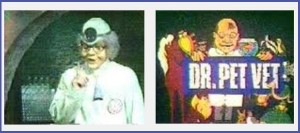
Dear Silo, A news broadcast by CBC Canada http://www.cbc.ca/marketplace tonight [October 4, 2013] shined a negative light on the veterinary profession. The segment took a dog with a hidden camera to ten Toronto veterinarians to see what health recommendations were
suggested in the first check-up. According to the show’s host, the veterinarians all provided various recommendations that did not align. The host also “surveyed” the ten veterinarians asking them various questions about vaccinations, exams and medication. They made several anecdotal statements based on the ten veterinarians they questioned, calling the data “black and white.” Nothing is “black and white,”
as the report suggests.
Trupanion disagrees with the statements and overall accusations made against the veterinary profession in this news broadcast. This is not what we have seen in our 15 years of experience with veterinarians. We have hundreds of thousands of pet health claims that contradict this newscast and much evidence of the incredible value pet owners receive from the work done by veterinarians who have treated, healed and in some cases, saved their beloved pet.
CBC Marketplace compared the veterinarians’ recommendations to the opinions of an outspoken California-based researcher, who is a critic of vaccinations, and declared them facts. They surveyed and evaluated only ten veterinarians out of 12,500 currently in small animal practice in Canada. This is .08% of the general veterinarian population. The real story should be about the other 99.92% of the population, the veterinarians that serve nearly 10 million pets each year. We know them as an extremely honorable and trustworthy group of people. We expect there will
be an outrage from pet owners who have had generations of pets lovingly, competently and compassionately cared for by their family veterinarian, who charged only a fraction of what an MD would charge for the same procedures. Veterinarians have long subsidized the high quality of care pets receive in North America and it is unfair for CBC to attack the most trusted professionals. The data cited is narrowly
constructed to advance a negative point of view.
The average salary of a veterinarian was $82,040 in May 2010 according to the Occupational Outlook Handbook<http://www.bls.gov/ooh/healthcare/veterinarians.htm>. The average debt of new veterinary graduates is $150,000 (JAVMA September 15, 2008). They use medicine and equipment that costs the same used in human medicine. Often acting as the ultimate safety net for the care of pets in disadvantaged circumstances, many discount their salaries and pull from their own wallets to pay those costs for their patients.
It’s disheartening to see this respected and trusted profession criticized through a sensationalized news story by the media that fails to display tangible evidence that back their statements. We support veterinarians across the world and stand by their practices as they continue to maintain the health and wellness of our four-legged family members. Darryl Rawlings, Trupanion CEO.
Supplemental– Who are Trupanion? http://trupanion.com/
Are these the 10 most expensive pets? http://www.meowoof.com.au/?p=1712
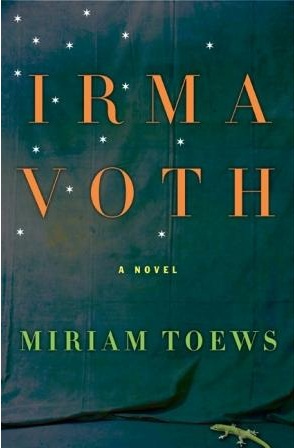
Miriam Toews’ Irma Voth follows the trials and tribulations of a rebellious, yet eager to please, 19 year old young woman from a strict Mennonite community near Chihuahua. The story begins with Irma recalling the failure of her marriage to local Mexican man. Irma provides the reader with a brief glimpse into her past while she pines over her botched marriage. Her family’s mysterious and seemingly unexplained relocation from the Canadian prairies and her father’s disapproval and disownment over her marriage are vaguely addressed. The story, told by Irma, weaves her past with her present in an effort to understand her situation and the situation of those around her. In her attempt to reason and understand her surroundings, Irma reveals what she knows and what she longs to understand.
As Irma guides the reader through her interactions with the family and community that has cast her aside, the reader catches a glimpse into her very foreign and complex world. As the story unfolds, different characters are exposed. Irma’s younger sister, the 13-year-old Aggie, sees her older sister’s life as an adventure and longs to follow in her footsteps—however resistant Irma may be to this. Aggie’s innocence seems to mirror what Irma has lost in her recent actions and through her actions, the reader can understand the difficulty facing Irma: protecting her sister vs. letting her find her own way, no matter what mistakes she may possibly make. The reader cannot help by admire Aggie’s eagerness and lust for life. Irma robustly contrasts this and the reader is left to try to decipher Irma’s motivations.

The novel is told through the eyes of Irma. Much of the dialogue and action is driven by Aggie’s character. Irma takes the position as an observant watcher, but through her actions and inner musings, drives the plot and offers the reader a detailed insight into her past. Not until the end does Irma take a long overdue aggressive stand and make bold moves for reasons she feels justified in. With an ending that will resonate with any reader, this novel tells a haunting tale of moral obligations and maturity.
Sarah Purdy is an educator and a book and literary reviewer for The Silo. Search “Sarah Purdy” from our site to read more Canadian book reviews.
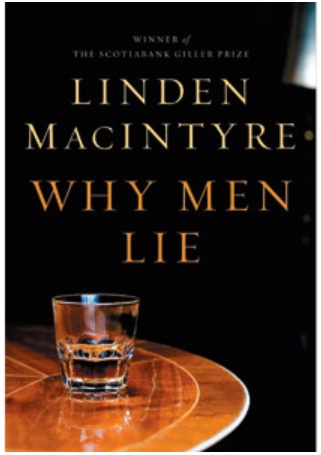 Why Men Lie is the third book in a series that takes place in Nova Scotia’s Cape Breton by Canadian author and journalist Lynden MacIntyre. As a follow up to Giller Prize Winning The Bishop’s Man, this installment of the story follows Effie MacAskill Gillis—a member of the cast in the last two novels in the series.
Why Men Lie is the third book in a series that takes place in Nova Scotia’s Cape Breton by Canadian author and journalist Lynden MacIntyre. As a follow up to Giller Prize Winning The Bishop’s Man, this installment of the story follows Effie MacAskill Gillis—a member of the cast in the last two novels in the series.
Effie is an intelligent and accomplished woman. She is a well-respected professor an unnamed university in Toronto. Leads an active social life and has a strong relationship with her adult daughter. However, as reader of the previous two novels will know, Effie has had a rocky past filled with repressed memories that haunt her throughout the book in a series of cloudy flashbacks. As with MacIntyre’s previous two novels, the present is wound fluidly with the past. Effie’s character enhances your understanding of her life and feelings through narrated flashbacks and musings.
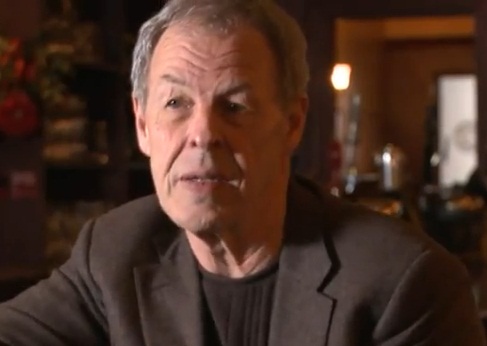
Perhaps what is most remarkable about this novel is that it is written in the female perspective. MacIntyre has been known for many years, both as a journalist and novelist, to have an impeccable ability to tell a story. Throughout reading this novel, the reader will forget that it is, in face, a male author and feel connected with Effie.
If one picks up this novel to see exactly why men lie, they may be disappointed. However, instead of giving the reader an answer, it leads them in the search for truth in Effie’s life and even their own. Sarah Purdy is an avid reader and reviewer of books for The Silo.